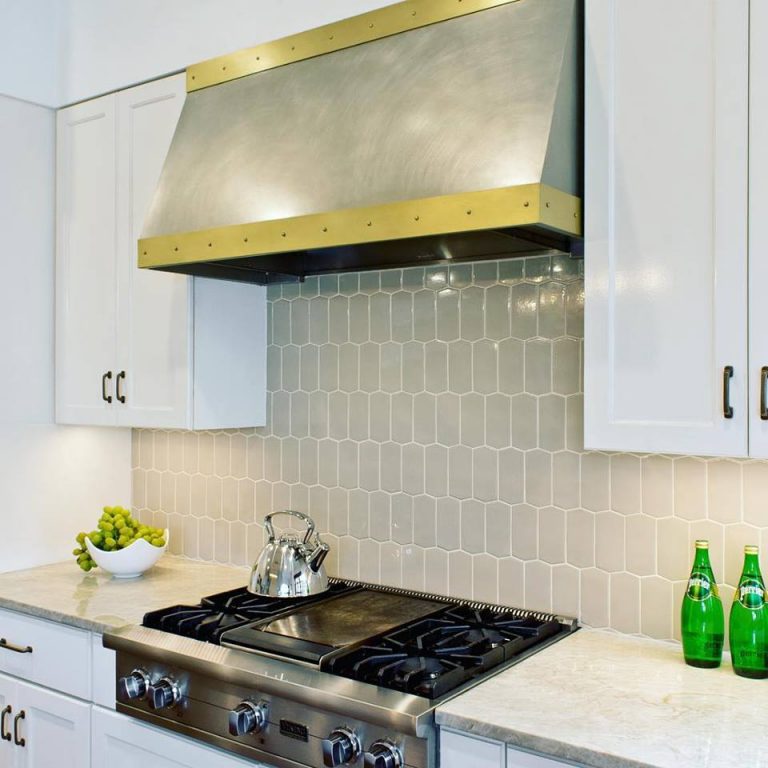

To complete the traditional feel, the designer specified a porcelain farm sink with a traditional style bridge faucet with porcelain lever handles. The lighting over the bar, from Rejuvenation Lighting, is a traditional shaker style, but finished in antique copper creating a new twist on an old theme. The designer specified an oiled natural maple butcher block as the counter for the eating bar. The back of the bar (viewed from the dining room) further incorporates the same espresso finish as an accent to create a paneled effect (Photo #1). By having the crown molding stained with an espresso finish, the eye is drawn across the room rather than up, minimizing the different ceiling heights. This door had wider styles and rails and a deep bevel framing the inset panel, thus incorporating the traditional look of the shaker door in a more contemporary setting. The designer addressed these 2 issues by creating a galley kitchen utilizing a mid-tone glazed finish on alder over an updated version of a shaker door. The ceiling height change in the enlarged kitchen created an eyesore. As one walked from the dining room (complete with the original stained glass and built-ins with leaded glass fronts) through the kitchen, into the family room, one felt as if they were walking into an entirely different home.Ģ.

The new family room (with 15’ ceilings) added a very contemporary feel to the home. The 1980’s remodel created two issues that were addressed in the current kitchen remodel:ġ. This remodel utilized the existing back porch as part of the kitchen. This 1920 Craftsman home was remodeled in the early 80’s where a large family room was added off the back of the home.


 0 kommentar(er)
0 kommentar(er)
